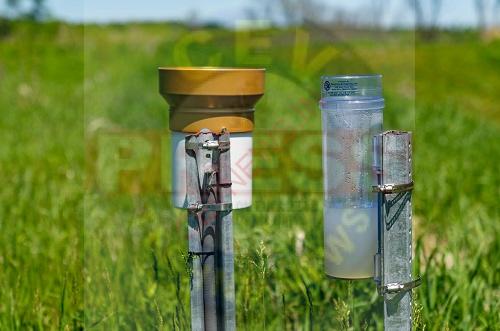MEANING OF RAIN GAUGE AND ITS TYPES
A form of precipitation in which rainfall water reaches the earth from the atmosphere is measured by an instrument called rain gauge. Rain gauge is also variously known as hyetometer, Ombrometer, or Pluviometer.
ALSO, A rain gauge is an instrument you can use to measure the amount of rainfall your area receives in a given time period. With this, you won’t have to rely on local weather reports. You will have your own data you can use for the good of your plants.
A rain gauge is a simple instrument anyone can install and use. Basically it looks like a transparent cylinder with markings. You can read the amount of rainfall in inches or millimetres. Yes, it’s only a simple instrument but it gives powerful information that you can use to make better decisions.
Selection of Rain-Gauging Station:
While selecting the site for rain-gauging station following points should be take kept in mind:
- The spot at which rain-gauge is to be installed should be truly representative of the area, of which it is supposed to give depth of rainfall.
- The site should be an open space.
- The nearest object from the rain gauge should be kept at a distance of twice the height of the object.
- The rain-gauging station should be easily accessible to the observer at all times.
- The gauge should be erected on level ground, not upon a slope or a terrace and never on a wall or a roof.
- All other conditions satisfied, a position sheltered from the wind is preferable to an exposed one. In mountains and near sea coasts it is very essential to ensure that the gauge is not un-dully exposed to the swept of wind.
- 10% of the total number of rain gauge stations of any basin should be self-recording.
- The observer must visit the site regularly to ensure its proper reading readiness for measurement
- The gauge should be properly secured by a barbed wire fencing and locking arrangement.
- The rain-gauging station should not be too close to the buildings or trees etc. The nearness of such objects affects entry of rainfall in the funnel. Its distance from other objects should not be less than twice the height of the object above the rim of the gauge.
Types of rain gauges:
Measuring rainfall can be is primarily done in three different ways using three different types of rain gauges. The three major types of rain gauges are the standard gauge, tipping bucket gauge and weighing gauge. Further distinguishing aspects such as how they are set up and how they deliver data can be made, though the basic operation of rain gauges does not usually vary from these primary rain gauge types.
The Standard Rain Gauge
The recording of rainfall using the standard or funnel rain gauge is generally done manually. These gauges work by catching the falling rain in a funnel-shaped collector that is attached to a measuring tube. The area of the collector is 10 times that of the tube; thus, the rain gauge works by magnifying the liquid by a factor of 10.
Magnifying the rain in this way allows precise measurements down to a one-hundredth of an inch. Amounts that exceed the tube capacity are caught in the outer shell of the gauge, allowing the recorder to pour out the liquid in the tube and fill it back up if needed.
Tipping Bucket Type Rain Gauge
Tipping bucket type rain gauge is a 30cm sized circular rain gauge adopted for use by US weather bureau. It has 30cm diameter sharp edged receiver and at the end of the receiver is provided a funnel. Pair of buckets are pivoted under this funnel in such a manner that when one bucket receives 0.25mm of precipitation (rainfall),it tips discharging its rainfall into the container, bringing the other bucket under the funnel.
Tipping of bucket completes an electric circuit causing the movement of pen to mark on clock driven receiving drum which carries a recorded sheet. These electric pulses generated are recorded at the control room far away from the rain gauge station. This instrument is further suited for digitalizing the output signal.
Disadvantages of the Tipping or tilting bucket type rain gauges:
- When tipping of pockets takes place, rainfall at that instant is not recorded.
- Very high intensity of rainfall gives close signal s, which can make it difficult to record the number of tips and.
- Calibration of tips may change due to rusting and dirt accommodation.
Floating or natural syphon type rain gauge
The working of this type of rain gauge is similar to weighing bucket rain gauge. A funnel receives the water which is collected in a rectangular container. A float is provided at the bottom of the container, and this float raises as the water level rises in the container. Its movement is recorded by a pen moving on a recording drum actuated by clockwork.
When the water rises, this float reaches the top floating in the water, then the siphon comes into operation and releases the water outwards through the connecting pipe, hence all water inbox is drained out. The curve drawn using this data is known as the mass curve of rainfall.
Disadvantages of syphon type automatic rainfall recorder:
- Cost instruments than other recording type instruments.
- Mechanical defects sometimes give enormous results.

